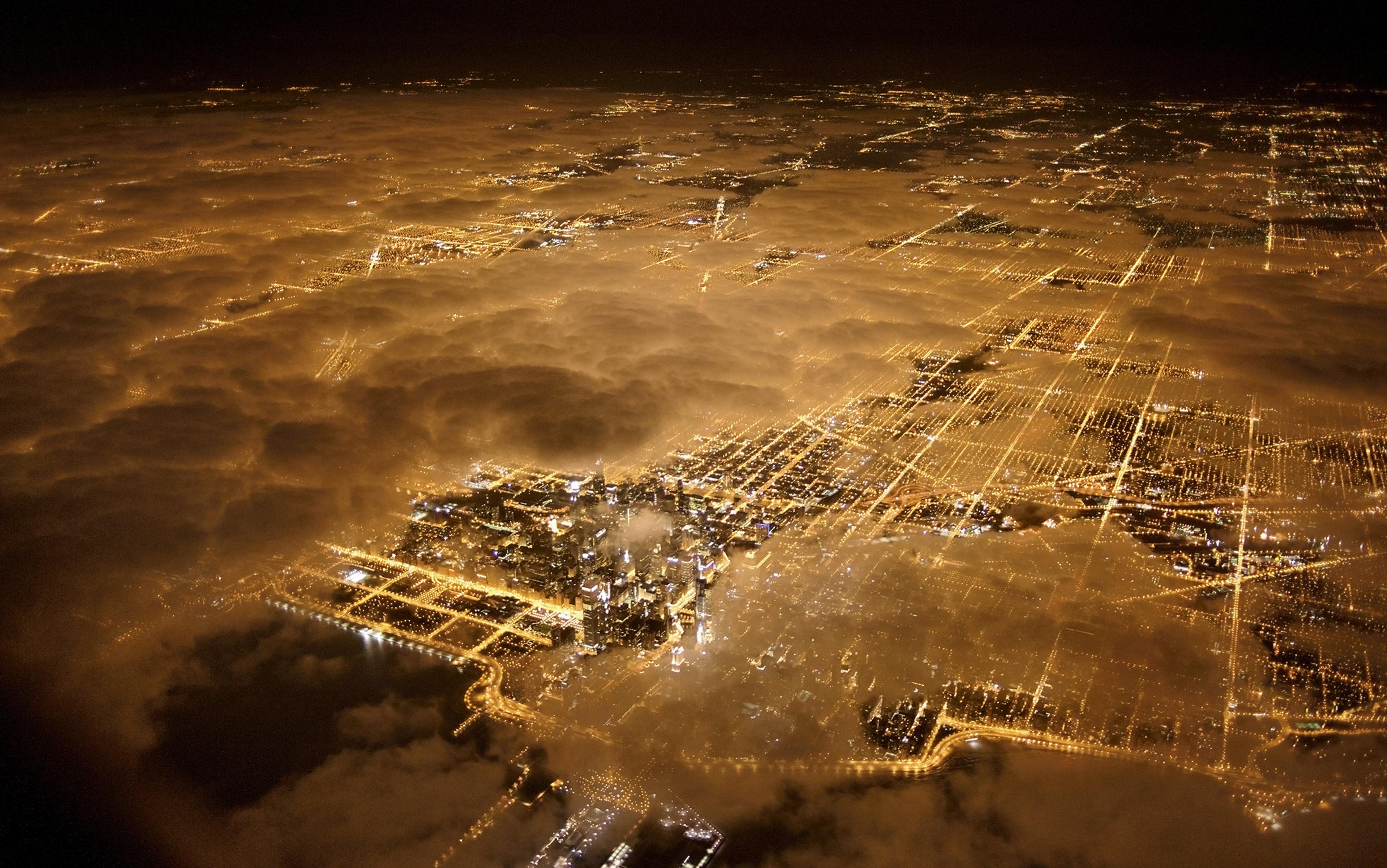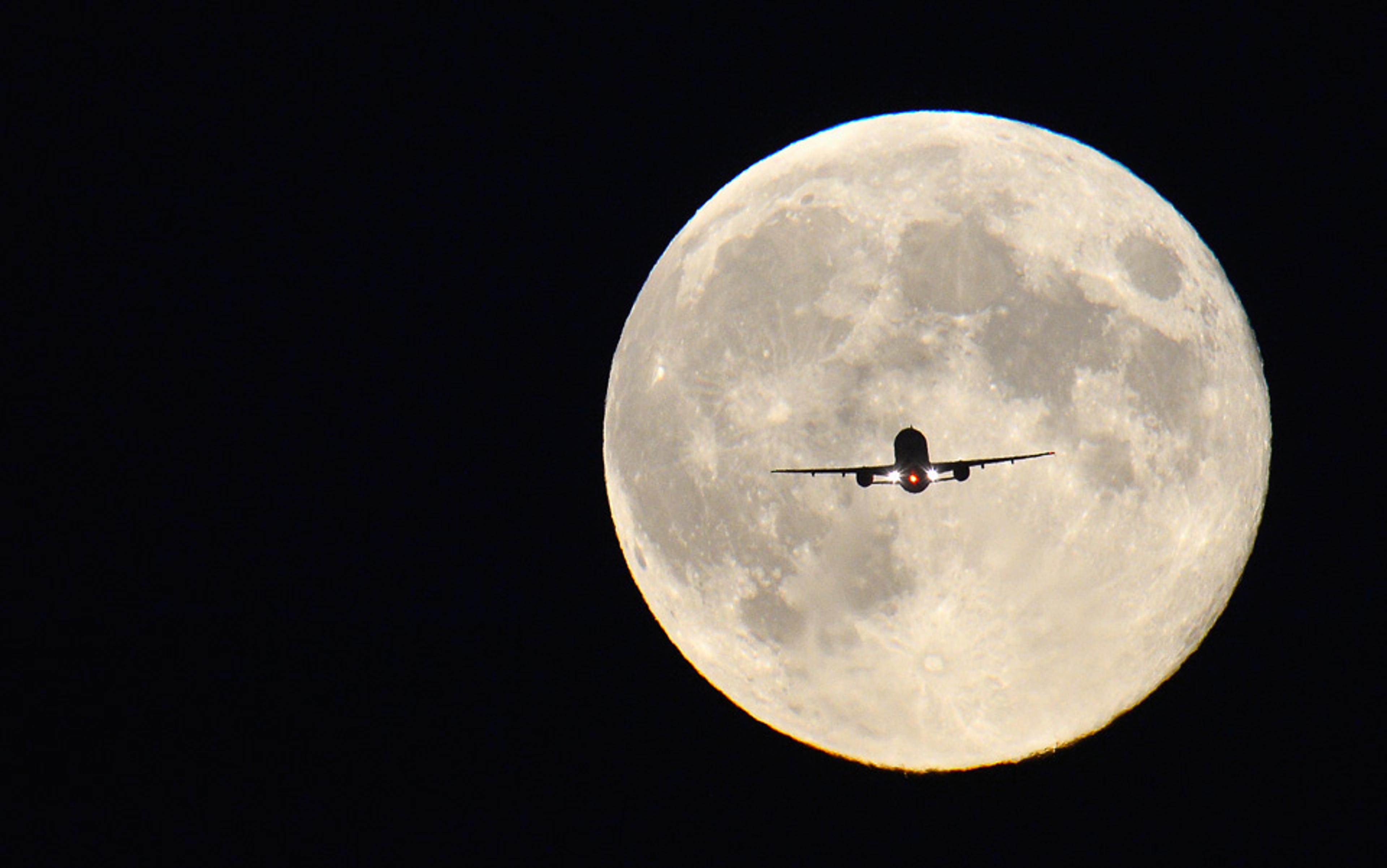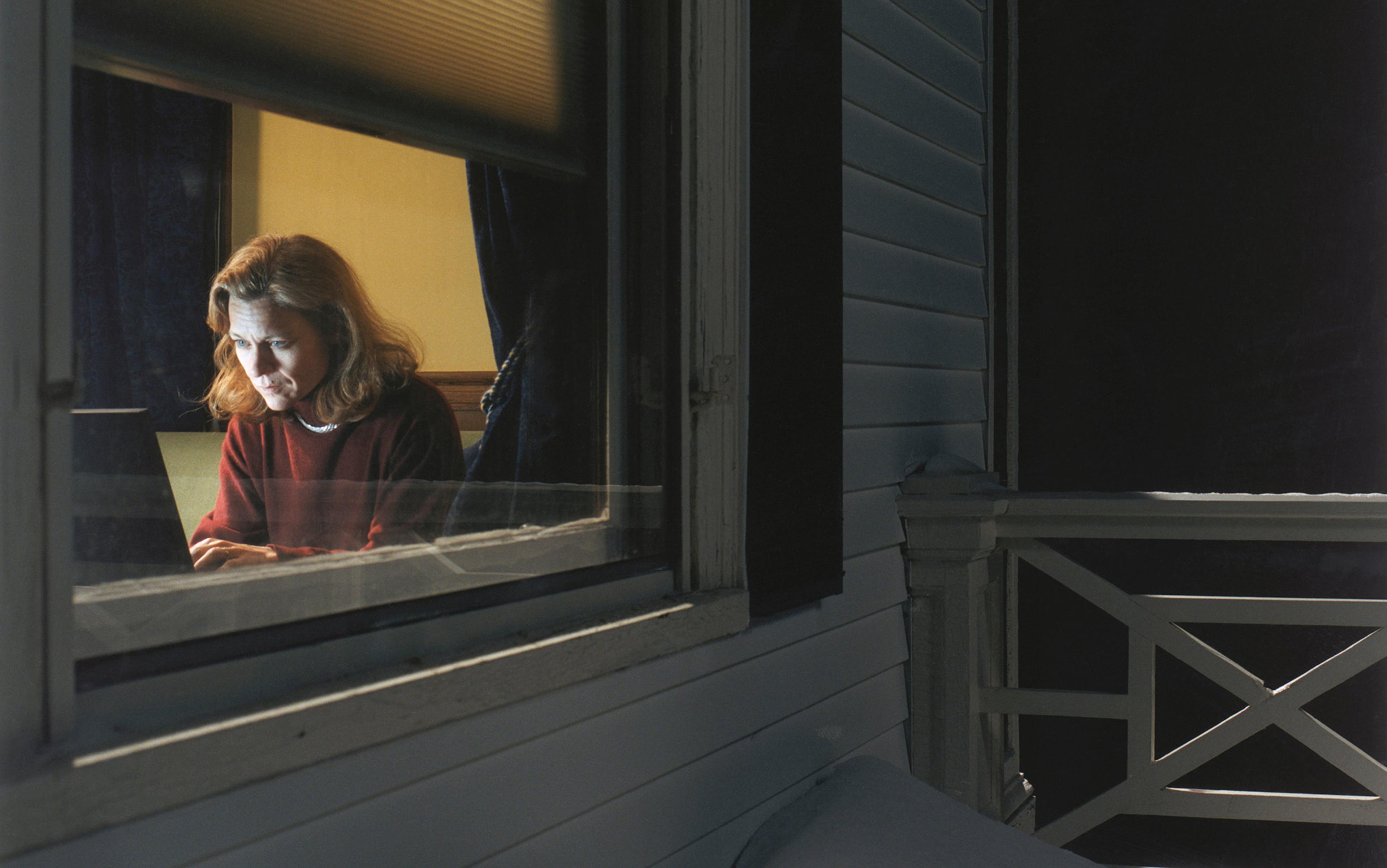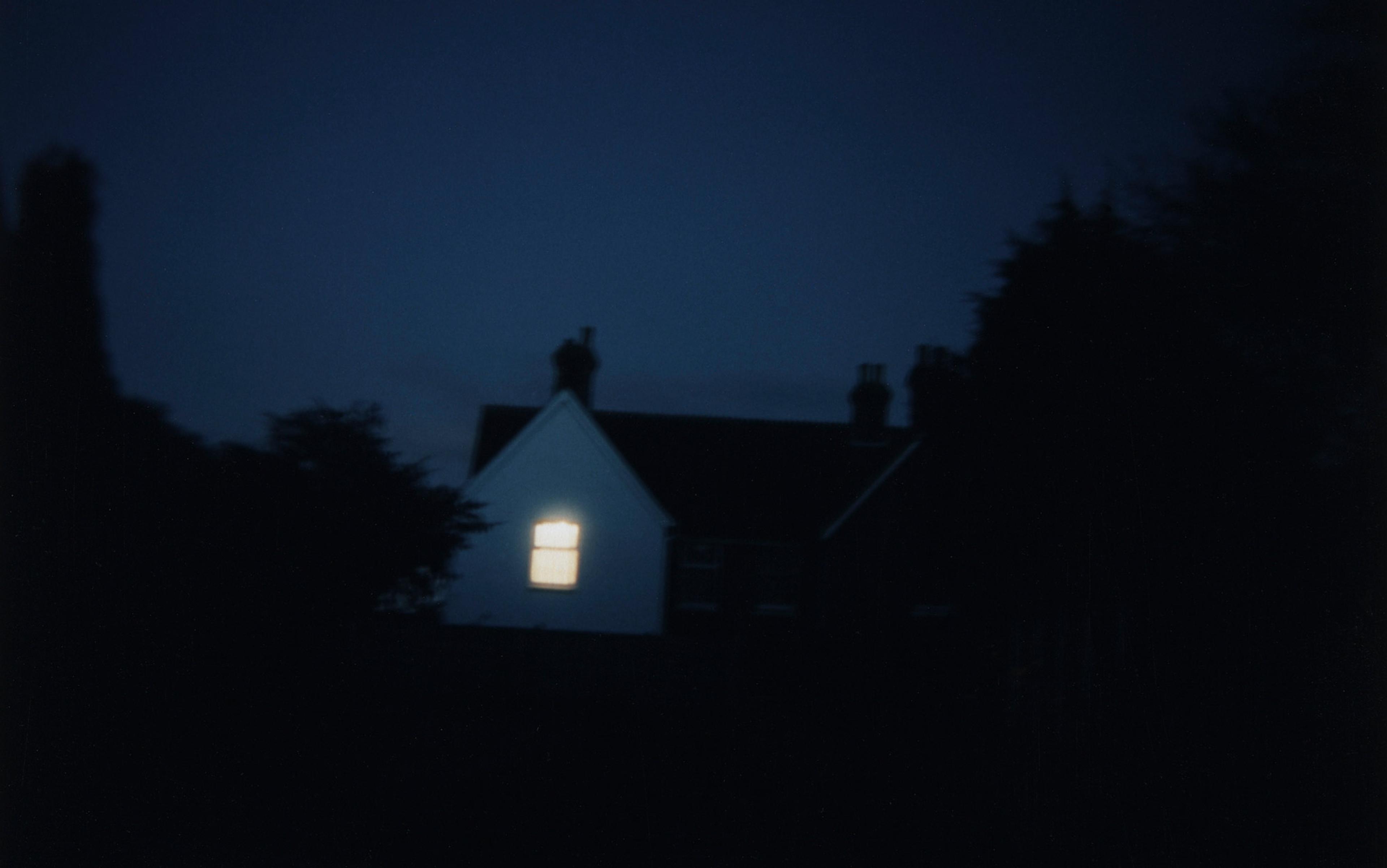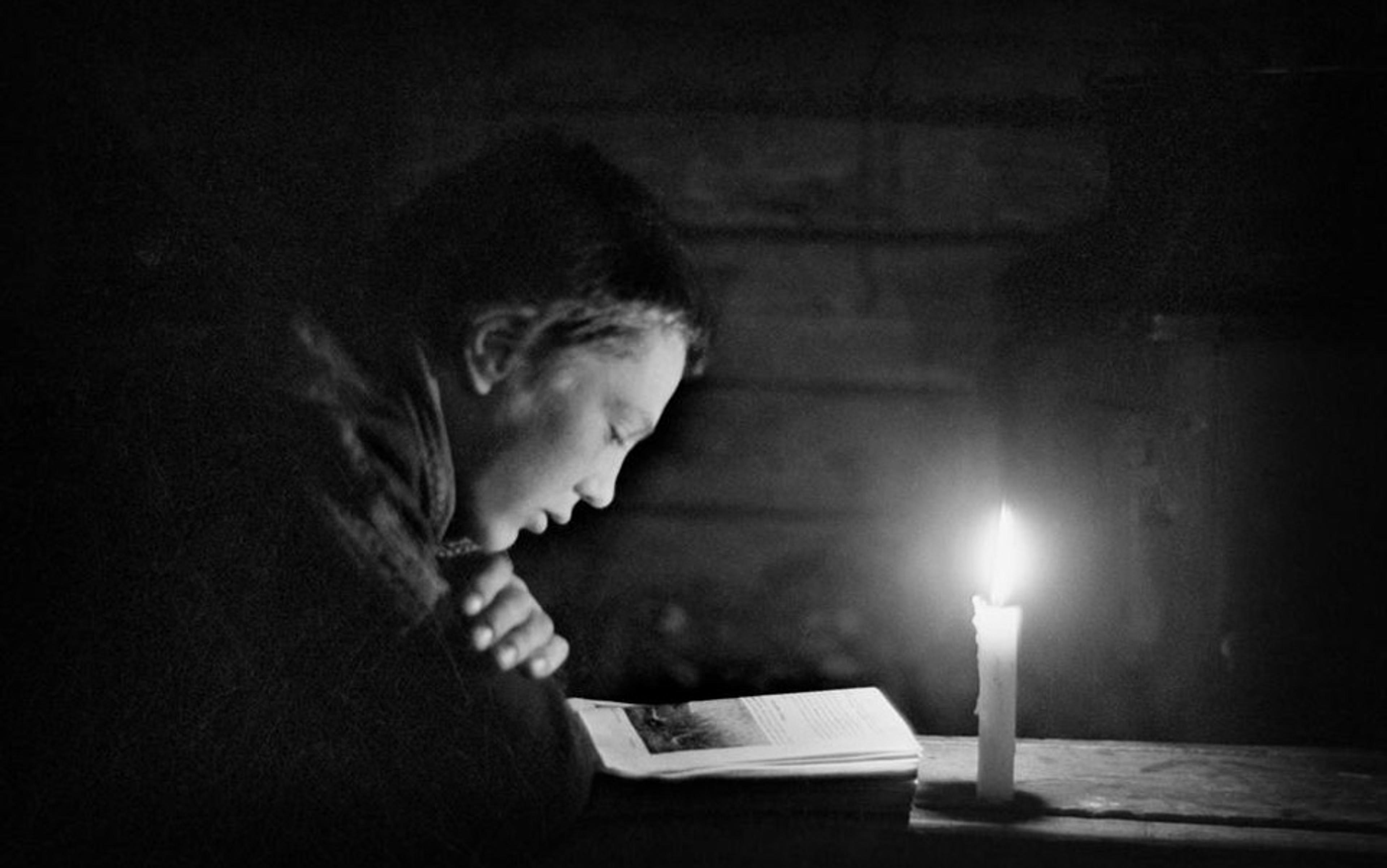Sound dominated my senses as we left the village of San Pedro de Atacama and walked into the desert night. The crunch of shoes on gravel underlay our voices, which were hushed to avoid waking any households or street dogs. Our small group of astronomy writers was escaping from light and, without any flashlights or streetlamps, we struggled to see, so our other senses were heightened. Land that looked red by day was now monochromatic, the rods in our retinas serving as our only visual input.
After about 15 minutes of hiking, we stopped to take some pictures of the sky. I fumbled with my gear and tried to get my bearings, but everything was alien. I was horribly jet-lagged after 10 hours hunched against the window of a 757, another two-hour flight north from Santiago and a two-hour bus ride, and it wan’t just my oxygen-hungry brain that put me out of sorts. The Atacama Desert looked like Mars as drawn by Dr Seuss; I was surrounded by wrong-coloured cliffs and swirling rock formations. But I was determined to photograph something even more bizarre: the Large Magellanic Cloud, a dwarf galaxy you can see only from the southern hemisphere. I perched my camera on a rock and aimed at the sky, but the cosmic smudge would not resolve in my viewfinder. I stood, brushed dirt from my jeans, and looked up.
The unfamiliar sky momentarily took away what little breath I had left at 8,000 feet in elevation. Above the horizon was the conspicuous Southern Cross. Orion was there, too, but looked as disoriented as I felt, upside down to the world. And there were so many constellations I’d never seen, with hopeful, Latinate names such as Dorado and Reticulum. Countless stars blazed into view as I stared into the smear of the Milky Way.
To most people who have travelled outside the developed world – whether to camp or to meditate or to hunt – such bright and plentiful stars are a glorious sight. But this beauty instilled in me a creeping sense of guilt. At home, 1,500 miles north, I wouldn’t recognise such spangled heavens. From where I live in the American Midwest, the stars might as well not exist. After journeying millions of years, their light is swallowed by city glare and my porch lantern. Those that make it through will still fail: not even bright Betelgeuse can outshine my iPhone. Yet I am an astronomy writer, a person who thinks about stars and planets all the time. What does my neglect of the night sky say about the rest of humanity?
‘We are all descended from astronomers,’ the astrophysicist Neil deGrasse Tyson intones in the rebooted version of the TV show Cosmos. This is as poetic as it is true. Everyone owns the night sky; it was the one natural realm all our ancestors could see and know intimately. No river, no grand mountain or canyon, not even the oceans can claim that. But since Edison’s light bulbs colonised our cities, the vast majority of humans has ceased to see those skies. More than 60 per cent of the world, and fully 99 per cent of the US and Europe, lives under a yellowy sky polluted with light. For many of us, the only place to see the milky backbone of our own galaxy is on the ceiling of a planetarium. Although humans are diurnal, factories and Twitter and hospitals and CNN are not, so we must conquer the darkness. As a result, almost everything industrialised people build is lit up at night. Malls, hospitals, car dealerships. Streets, bridges, air and sea ports. Buildings on a skyline. These artificial lights identify our cities all the way from the moon. If aliens ever do drop by, this might be their first sign that someone is home.
But cosmology, the study and interpretation of the universe, has always depended on a star-choked dark sky. Ancient civilisations from the Greeks to the Pawnee looked to the stars and saw not only creation tales, but active participants in their lives. Christians, who invest great meaning in the good of light and the evil of darkness, spread a starry message, too: the star of Bethlehem as a beacon to salvation. A millennium and a half later, Galileo looked up and saw a new version of the cosmos, breaking the dawn of modern science. And Edwin Hubble discovered the expansion of the universe by the candlelight of supernovas. All of this happened under virginal skies and, by any measure, we don’t have those anymore. We look at our glowing rectangles, and we opt out of that shared heritage.
Nowhere is light pollution more apparent, almost achingly so, than in satellite images of the Earth from space. The continental United States seems to split in half: the eastern side is brighter than the west, except for the klieg lights of Las Vegas. Highways innervate America, connecting luminous dots of small towns and big cities. Across the Atlantic, Europe shimmers. Moscow is a radiant nine-pointed star. The Nile Delta glows like a dandelion sprouting from mostly indigo Africa. Farther east, Hong Kong and Shanghai are ablaze, and the demilitarised zone separates dark North Korea from South Korea more cleanly than if the peninsula had been cleft in two. Developed society, it’s clear, is where the light is.
Human-controlled light has pierced the night for thousands of years, long before Edison. Campfires warmed our ancestors’ feet and cooked their meals; the Harvard anthropologist Richard Wrangham argues in his book Catching Fire (2009) that gathering around a flame to eat and to commune with others is, in fact, what made us human. Not just fellowship but safety has long been the primary rationale for pushing back the night. ‘Evil spirits love not the smell of lamps,’ as Plato put it. Comforting, lambent lamplight led us safely home by tattling on the people and potholes and animals that would otherwise do us harm. By the early 17th century, residents of cities such as Paris and London were admonished to keep lights burning in the windows of all houses that faced the streets, as the historian A Roger Ekirch notes in his book At Day’s Close: Night in Times Past (2005). Taxpayers funded oil lamps and candlelit lanterns for the avenues, while only genteel households could afford fine beeswax or spermaceti candles; most people relied on tallow, made from animal fat.
Despite their utility, these artificial lights were sources of danger in their own right. Huge swathes of cities – notably London and Chicago – were consumed in conflagrations that started as accidents, born of the necessity of using flames to see. By the 1800s, gas lamps reduced fire risks, but cities were by no means safer from crime; gaslit London in the late 1880s, full of foggy halos casting shadows down dark alleys, is as famous for murder as anything else. Even now, artificial light provides an artificial sense of security. A 1997 report from the US National Institute of Justice found no conclusive correlation between night-time lighting and crime rates. The International Dark Sky Association, a dedicated group of night-time advocates, points out that bright, glaring lamps create sharper contrasts between light and darkness, blinding drivers and homeowners alike.
And even so – what price safety! A young but rapidly growing field of research suggests that night-time light itself is far more dangerous than the dark. In a 2012 report, an American Medical Association committee called electric lighting a ‘man-made self-experiment’ creating potentially harmful health effects. Humans, and everything else that lives on this planet with us, evolved during billions of years along a reliable cycle of day and night, with clear boundaries between them. Staunching the flood of artificial light can help restore this divide. Our well-being, and that of our fellow creatures, might depend on us doing so – or at the very least trying. The loss of night-time darkness neglects our shared past, but it might very well cut short our futures too.
The midnight desert was quiet while I knelt with my camera last spring, but the Atacama was far from asleep. Beetles and red scorpions scuttled across the dirt. Vallenar toads crouched on the lomas. South American grey foxes sniffed the earth, hunting furry viscachas and Darwin’s leaf-eared mice. Great horned owls circled overhead, hunting the rodents and the foxes. Nocturnal animals such as these make up 30 per cent of all vertebrates and 60 per cent of all invertebrates on Earth, according to an estimate by the German biologist Franz Hölker and colleagues. These night-dwellers are the most obvious victims of artificial light. Light pollution interferes with their natural rhythms in myriad ways.
To gauge levels of light pollution, scientists use lux, which is a measurement of illuminance that counts how many photons per second strike our eyes. As an example, the planet Venus, at its brightest, produces 0.0001 lux. In the natural nightscape, plants and animals are exposed to light levels that max out around 0.1 to 0.3 lux, during the week around full moon. By contrast, a typical shopping mall gushes 10 to 20 lux at night. That is 200,000 times brighter than the illuminance of a moonless evening.
For migratory birds that fly at night, artificial light is a deadly siren. In New York every September, columns of light shine skyward in tribute to the destroyed World Trade Center towers. Tens of thousands of migrating birds, trying to navigate by the moon and stars, fly into the beams and circle, zombie-like, until someone shuts the lights off. Birds also collide with glittering buildings and lighthouses and are stunned, falling to their deaths. It is such a widespread problem that cities from Toronto to Chicago adopt lights-out campaigns during peak migrations.
In mammals, from mice to men, the effects of melatonin suppression might be far worse
Sea turtles also need a dark sky atlas to find their way. Newly hatched on the Atlantic coast, they are confused by beaches bathed in light and follow a false moon, turning away from the safety of the sea. Florida wildlife officials and even NASA have spent decades trying to build better beach embankments, using old railcars, driftwood and sand dunes to mask the artificial light streaming from highways and launch pads.
Almost all bat species are nocturnal, hunting out insects, frogs, nectar, pollen, fruit and other bats when it is dark. Omnivorous bats use echolocation rather than vision to track their prey, but extra light is far from helpful. Insect-eating bats chose different foraging routes to avoid just 0.4 lux of light, according to a 2009 study led by Emma Stone of the University of Bristol. Fruit bats avoid the glare, too. Costa Rican short-tailed bats, given a choice between pepper plants growing in the dark and plants illuminated by sodium lamps, chose the dark twice as often. There are ecological consequences: changing their flight paths alters the ‘seed rain’, showered by defecating bats, that can be crucial to recolonising clear-cut rainforest. Along with changing the eating habits of bats, light can have direct physiological effects, another study found. Juvenile bats that hailed from illuminated buildings were smaller – their wings were shorter and they weighed less – than those born to the dark.
For pelagic ocean animals, who live in the liminal space between the surface and the sea floor, the light of the moon and the sun are the only landmarks. Dazzling boats in coastal waters – another luminous activity visible from space – lure fish to the surface and into nets, but also interfere with marine organisms’ navigation, hunting and mating habits.
Including moths to a flame, nocturnal invertebrates are the most well-recognised examples of creatures disoriented by light. Insects congregate around light sources until they die of exhaustion (or, caught in the spotlight, are eaten by birds and bats). In a 2012 study, the Exeter scientist Jonathan Bennie found that light pollution changed the composition of ecological communities among five major invertebrate groups. ‘Street lighting changes the environment at higher levels of biological organisation than previously recognised,’ Bennie and his co-authors wrote, ‘raising the potential that it can alter the structure and function of ecosystems.’
This is true for diurnal creatures, too. Animals that make their living during the day are still disrupted by artificial night-time light. Occasionally, artificial light can be beneficial by extending the hours of day – in a 2012 study, the biologist Ross Dwyer and his colleagues at the University of Exeter found a waterbird called the common redshank foraged longer and more effectively at night along an industrialised Scottish estuary. But as with the insects, this carries consequences for the broader ecosystem.
On land, artificial lighting causes a cascade of negative physiological changes in diurnal creatures, many brought about by delayed release of the hormone melatonin. Davide Dominoni and his colleagues at the Max Planck Institute in Germany found it was suppressed in European blackbirds exposed to just 0.3 lux at night. These birds developed their reproductive systems a month earlier, and moulted earlier, than birds kept in the dark. A different study, by Travis Longcore of the Urban Wildlands Group in Los Angeles, found that blue tits under the influence of streetlamps laid their eggs earlier than those experiencing dark nights. And in mammals, from mice to men, the effects of melatonin suppression might be far worse.
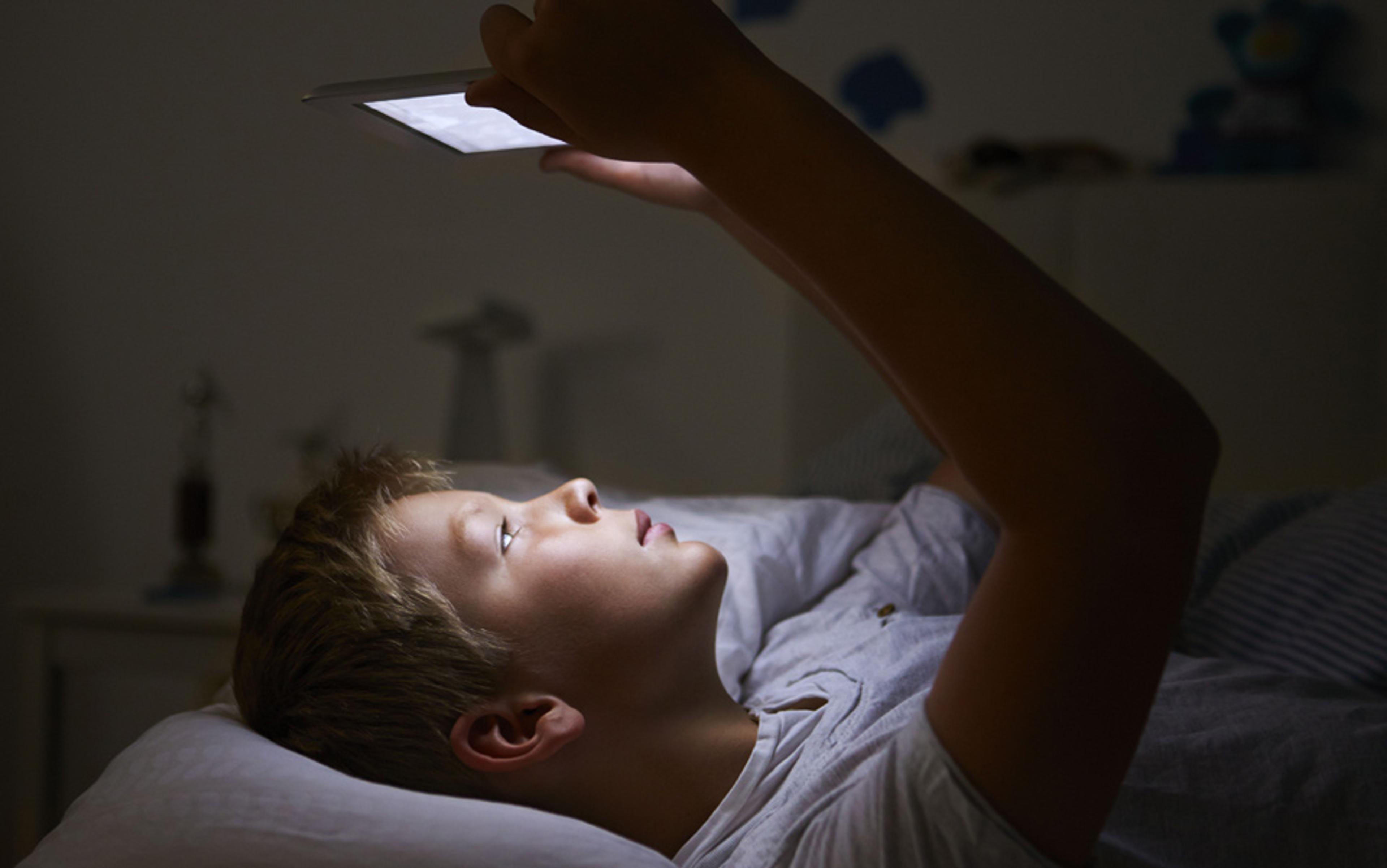
The National Sleep Foundation says that more than 90 per cent of Americans regularly use some type of electronic device in the hour before bed. Photo by Rex Features
A growing body of evidence shows that light pollution exacerbates, and might directly cause, cancer, obesity, and depression, the troublesome triumvirate of industrialised society. One of the first people to notice this correlation, at least as it applies to cancer, is Richard Stevens, a professor at the University of Connecticut, respected cancer epidemiologist, and mild insomniac. In the early 1980s, Stevens and other researchers were beginning to realise there was little or no connection between diet and rising rates of breast cancer, contrary to what had been suspected. As Stevens puts it, it was like a light bulb going on when he realised that, in fact, a light bulb going on might be a culprit.
‘I really did wake up in the middle of the night in my apartment in Washington state, and realise I could read a newspaper by the light from a street light. And I wondered, what’s that?’ he told me. ‘So I started calling around. I started to learn about circadian rhythmicity. And about this hormone called melatonin.’ His 1987 paper ‘Electric Power Use and Breast Cancer: A Hypothesis’ was one of the first to report the potential connection between rising cancer rates and artificial night-time light exposure, something he and others have continued to report in the intervening 27 years.
Melatonin is produced in the pineal gland, a small pine-cone-shaped knob in the centre of the vertebrate brain. It is derived from serotonin, a neurotransmitter that is involved in mood and appetite. And melatonin is an antioxidant, which protects DNA from damage; this has important implications for cancer biology. Stevens has published research demonstrating melatonin can prevent breast tumours in rats. But the hormone’s chief role is in regulating the daily sleep-wake cycle by causing drowsiness and lowering core body temperature. Melatonin has the same basic function in people, birds, fish, amphibians, and other mammals. Production of melatonin should begin at dusk, when we are supposed to sleep. Light – not wakefulness itself, but light – shuts it off, as Stevens emphasised to me.
A remarkably recent discovery helps explain what’s going on. In 2000, scientists noticed a light-capturing pigment, which they called melanopsin, in the retina. It’s a different pigment from the types in our cone- and rod-shaped photoreceptors, which helped me see the monochrome landscape of the midnight Atacama. In 2002, the biologists David Berson of Brown University and Samer Hattar of Johns Hopkins University rediscovered a special type of cell that uses this pigment (they were first described, but then forgotten, in 1923). They were dubbed ‘intrinsically photosensitive retinal ganglion cells’ – simply put, they have nothing to do with vision, but they sense light, whose presence they communicate directly to the brain. Blue light, to be specific. By studying the eyes of primitive creatures such as lampreys and hagfish, scientists can tell that these special cells have been present in the vertebrate retina for at least 500 million years. This means that since the dawn of backboned animals, all such creatures have been equipped to track the day and night, and calibrate their metabolic cycles accordingly.
The light-exposed rodents got fat, even though they were eating the same number of calories as their dark-sequestered mates
When you think about the fact that humans figured out fire 250,000 years ago and electricity just 130 years ago, the importance of light to our brains and biology starts to become clearer. As Stevens puts it, circadian biology is at the core of all biology, human biology included. Randy Nelson, a circadian biologist at Ohio State University, has been studying light’s effects on depression and obesity since 2004, when one of his graduate students was hospitalised for a staph infection. The student complained bitterly about the bright lights in his room and in the hospital hallway, which robbed him of sleep and stressed him out. Nelson and another graduate student, Laura Fonken, decided to investigate this complaint using rodents as experimental subjects. They found that mice who were exposed to constant bright light exhibited depressive symptoms, behaving listlessly and ignoring their sugar-water treats. Remarkably, they then found that the same happened when the mice were exposed to only 5 lux at night, when the animals were normally active. This is equivalent, Fonken notes, to leaving a television on in your bedroom, or a computer screen next to your head as you nod off. Later, the team worked with diurnal Nile grass rats instead of nocturnal mice, and found the same thing. The rats exhibited not only depression, but demonstrable changes in neuronal connectivity in the hippocampus, the part of the brain involved in learning, memory and affective responses.
Along the way, Fonken also noticed something unexpected: the light-exposed rodents got fat, even though they were eating the same number of calories as their dark-sequestered mates. What changed was their circadian rhythms; like a snacky night owl, they were eating when they should have been inactive, upending their digestive and metabolic activity. One side effect of inbreeding lab mice is that some of them do not produce melatonin, Fonken told me, which means something else might have been interrupting their internal timepieces. Fonken looked at gene expression and noticed changes in a gene known helpfully as CLOCK (Circadian Locomotor Output Cycles Kaput), among others. Messenger RNA molecules were activated by light, switching multiple genes on or off to regulate circadian rhythms. Fonken guards against drawing too many human conclusions from these rodent studies, but epidemiological evidence suggests the implications for people could be profound.
‘Rather than falling, night, to the watchful eye, rises,’ writes Ekirch in At Day’s Close. Shadows creep up lows and valleys first, then consume hillsides and houses and the tallest buildings. Muted greys and deeper blues chase off the sun until finally the sky leaks no colour. When we sleep according to a solar cycle, melatonin production follows this pattern, rising with the night. But artificial light tamps it down. This is frustratingly apparent for a special class of humans who experience sunsets every 90 minutes: astronauts.
One of the most frequent complaints of orbital crew members is insomnia; they pop sleeping pills on a regular basis, and still get only about six hours of shuteye, though they’re allotted eight. Steven W Lockley, a Harvard neuroscientist, recommends altering the light to improve matters. In 2012, he advised NASA engineers to change the light bulbs on the International Space Station to a type of LED that can display blueshifted light during the ‘day’, when the crew is working, and red-shifted light when they need to rest. Why the difference? That crucial ganglion, the circadian photoreceptor, is particularly sensitive to light toward the bluish end of the red, orange, yellow, green, blue, indigo and violet visible-light spectrum.
Blue light also pours from the phone, tablet or computer screen on which you’re reading this. This light, in a wavelength very similar to daylight, has been shown to exacerbate insomnia in scores of studies. In 2007, Belgian researchers surveyed 1,656 teenagers about their use of mobile phones after lights-out, and found those who used a phone less than once per week were more than twice as likely to be ‘very tired’ a year later as those who never did. Using a phone after lights-out about once a week increased the risk of being ‘very tired’ by five times. In 2012, researchers at Rensselaer Polytechnic Institute showed that two hours of exposure to a bright tablet screen at night, like an iPad or a Kindle, reduced melatonin levels by 22 per cent. And the National Sleep Foundation says that more than 90 per cent of Americans regularly use some type of electronic device in the hour before bed.
There is a great difference between natural night waking and electronic-induced insomnia, Stevens points out. In his history of the night, Ekirch explains that temporary night-time waking – of the type that used to plague Stevens – is hardly unnatural. Humans have aroused in the middle of the night since time immemorial to pee, snack, chat with relatives and neighbours, make love, and simply enjoy ‘quiet wakefulness’. ‘There is every reason to believe that segmented sleep, such as many wild animals exhibit, had long been the natural pattern of our slumber before the modern age, with a provenance as old as humankind,’ Ekirch writes. The unnatural part is that, now, we get up and we turn on the light, silencing melatonin.
Insomnia is hardly the worst side effect of light pollution. Shift workers, who rise with the night and work awash in blue light, experience not only disrupted circadian rhythms and sleep deprivation, but an increased risk of breast and prostate cancer. These cancers, which require hormones to grow, are suppressed in the presence of melatonin, Stevens has shown. In 2010, Stevens published a review of breast cancer sensitivity in 164 countries, and found a 30 to 50 per cent increased risk of cancer in nations with the worst light pollution, but no increased prevalence of non-hormonally dependent cancers in the same populations.
‘Our use of electric light in the modern world is disrupting our circadian sleep and our biology. There is no question about that. Does that have physiological consequences? There is more and more evidence that it does,’ Stevens told me. ‘The epidemiological studies are the crudest, but the most important.’
I am a night-time chronotype and I drink electricity as thirstily as anyone
As we discussed a litany of light-related problems, I asked Stevens: ‘Is it a legitimate question to ask if light is the major factor in depression, obesity, and cancer? Is there potential for light to be the reason behind all of those things?’
‘Yes,’ he said flatly. ‘No doubt about it.’
The day is coming when doctors might feel confident saying so, he added, just as they now say that smoking causes lung cancer. The murky part is what to do about it.
A torrent of light is what you might call a ‘First World problem’. Even as Western cities try to bring back starlit nights, students throughout developing countries in southeast Asia and sub-Saharan Africa still read by candlelight. Economically depressed regions tend to be darker; after the collapse of communism, satellite imagery showed several countries in the former Soviet Union were dimmer at night.
When we, in the industrialised world, do manage to turn off the lights, there are measurable, beneficial effects on our circadian rhythms. In a widely reported paper last summer, Kenneth Wright at the University of Colorado at Boulder took eight students camping in the Rocky Mountains for two weeks. They weren’t allowed to use any artificial light after the sun went down – only the sanguine glow of campfire. After a week, melatonin started to rise at sunset, peak in the middle of the night, and taper just at sunrise, which Wright called a ‘remarkable’ result. ‘Internal biological time under natural light-dark conditions tightly synchronises to environmental time, and in this regard, humans are comparable to other animals,’ he wrote.
Of course, very few of us are going to camp outside nightly, or stop working at 4:30pm in winter, let alone shut down power plants and global commerce. And even as I mourn the loss of night, I am no Luddite myself. I read Wright’s study and so many others while sitting in bed, hours after the sun had set, bathed in the bluish spectrum of light emitted by my iPad. I am a night-time chronotype and I drink electricity as thirstily as anyone.
But there are a few things we can all do.
As NASA has found, redshifted lamps, rather than a blue hue, are a better choice for bedside reading. Chronobiologists are concerned about the fluorescent swirls that will comprise the majority of American light fixtures when the ban on incandescent bulbs finally sets in. They emit too much blue light – we should use red-shifted LEDs instead. The same goes for many building lights and streetlamps. Along with keeping us more awake, this light is especially intrusive for the same reason the sky is blue: it scatters more readily, causing even more light pollution.
Downward-directed streetlamps can illuminate larger areas while casting fewer shadows and errant upward glow. Smarter, more efficient use can cut wasted light, wasted money and wasted energy. This has been a powerful factor in bringing back the night in towns from Brainerd, Minnesota, to Paris – the City of Light. Since July 2013, the French capital has been going dark for several hours at night to save money and ‘reduce the print of artificial lighting on the nocturnal environment’, in the words of its Environment Ministry. In a paper published this January, Exeter’s Jonathan Bennie and colleagues reported that some economically developed regions, especially throughout Europe, are trending darker.
For those of us addicted to our glowing phones and tablets, an app called F.lux can help. It ‘warms’ your device’s display screen so that it shifts red in the evening, more closely matching incandescent bulbs and the hue of the setting sun. Just a brief glimpse at your mobile phone at bedtime is enough to expose your retinas to artificial light, so fighting such a comprehensive intrusion might be an exercise in futility. But even if we can’t completely quench our thirst for light, we can all make one small gesture, which could prompt us to unplug a little more.
I try to do this whenever the sky above St Louis is clear. After I climb out of my car but before I open the fence gate and the hinge cheeps, before I step onto the deck and the wood sags and the motion-sensor light turns on, I stop, and I look up. I nod at Jupiter, blazing in the east. I greet Orion in his more familiar, northern form. I squint at the moon if it is there and I let my eyes open wide, hoping more stars will leak through the city haze and reach me standing there, in the darkness.
